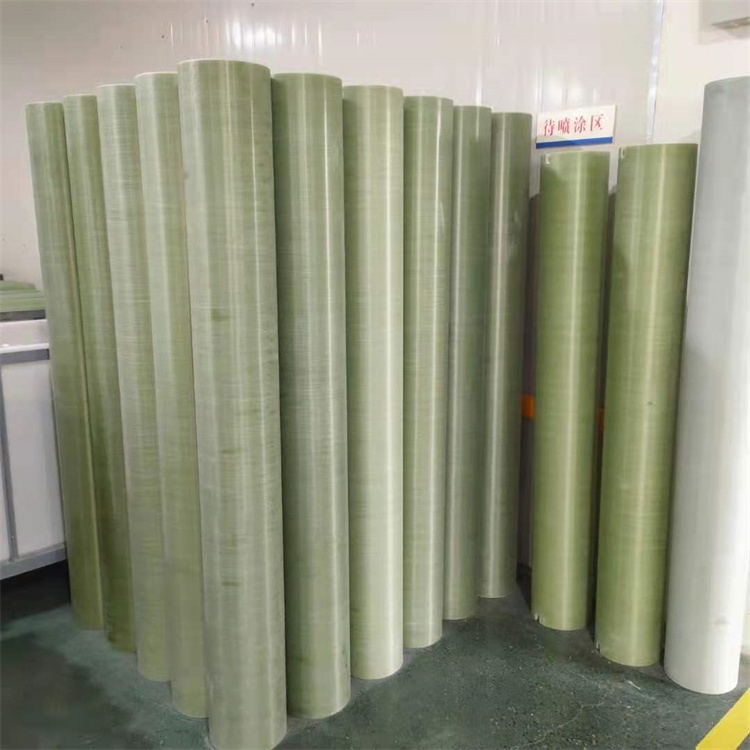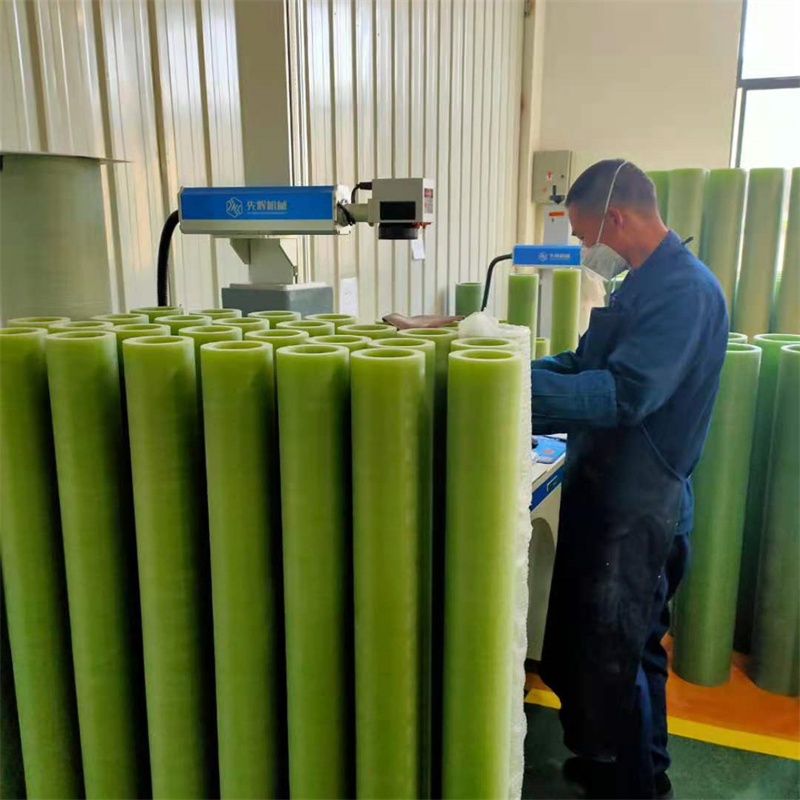Insights into FRP Wound Tubes: Manufacturing, Properties, Applications, and Future Prospects
Introduction
Fiber-Reinforced Polymer (FRP) wound tubes are becoming an increasingly popular choice in various industries due to their high strength-to-weight ratio, corrosion resistance, and low maintenance requirements. These tubes are manufactured by winding fibers in the form of glass, carbon, or aramid around a mandrel, and then impregnating the fibers with a polymer resin. The resulting composite material possesses superior mechanical properties than conventional materials, making it an ideal option for applications such as piping, pressure vessels, and structural members. This article aims to provide in-depth insights into the FRP wound tubes, including their manufacturing process, properties, applications, and future prospects.

Manufacturing Process
The FRP wound tubes are manufactured through a process known as filament winding. This involves winding continuous fibers around a rotating mandrel while simultaneously impregnating the fiber with a polymer resin. The fibers used for winding include glass, carbon, aramid, or a combination of these materials. The selection of the fibers depends on the desired properties of the final product.
The filament winding process consists of the following steps:
1. Mandrel Preparation: The mandrel is mounted onto a spindle and rotated at a controlled speed. Mandrels can be made of steel, aluminum, or plastic, depending on the application.
2. Release Agent Application: A release agent is applied to the mandrel to facilitate easy removal of the finished tube.
3. Fiber Placement: The fiber is continuously fed through a resin bath to impregnate it with the polymer resin. The wet fibers are then wound onto the mandrel at a predetermined angle and tension. The winding process can be performed manually or by using a machine.
4. Curing: The wound tube is left to cure at room temperature or in an oven. The curing process can take several hours, depending on the resin system used.
5. Finishing: Once the tube is cured, it is removed from the mandrel, and any excess material is trimmed off. The tube may also be sanded or painted as required.
Properties
FRP wound tubes offer a wide range of beneficial properties that make them an ideal option in various applications. Some of these properties include:
1. High Strength-to-Weight Ratio: FRP wound tubes possess a higher strength-to-weight ratio than conventional materials such as steel or aluminum. This means that they offer the same strength as these materials but are much lighter.
2. Corrosion Resistance: The polymer matrix used in FRP wound tubes is highly resistant to corrosion, making them ideal for use in harsh environments.
3. Chemical Resistance: FRP wound tubes are also highly resistant to a wide range of chemicals, including acids and alkalis.
4. Low Maintenance: The high durability and corrosion resistance of FRP wound tubes mean that they require minimal maintenance compared to traditional materials.
5. Design Flexibility: The filament winding process enables the production of tubes with complex geometries and varying wall thicknesses.

Applications
FRP wound tubes have numerous applications in various industries, such as:
1. Piping Systems: FRP wound tubes are commonly used in piping systems in the chemical processing industry. They are ideal for transporting corrosive fluids and gases.
2. Pressure Vessels: FRP wound tubes are also used in the manufacture of pressure vessels, such as tanks and cylinders. They offer high strength, durability, and corrosion resistance, making them ideal for storing and transporting hazardous materials.
3. Structural Members: FRP wound tubes are also used in the construction industry as structural members such as beams and columns due to their high strength-to-weight ratio.
4. Electrical Insulation: FRP wound tubes are also used as electrical insulation covers in high voltage applications.
Future Prospects
The use of FRP wound tubes is expected to increase in the coming years due to their numerous benefits. The growth of the chemical processing industry is expected to drive the demand for FRP piping systems. The construction industry will also continue to use FRP wound tubes due to their high strength-to-weight ratio and corrosion resistance. Research is also ongoing to improve the properties of FRP wound tubes and develop new applications. For instance, researchers are investigating the use of natural fibers such as hemp, flax, and jute in FRP wound tubes to improve their sustainability.
Conclusion
FRP wound tubes offer high strength, durability, and corrosion resistance, making them an excellent alternative to traditional materials such as steel and aluminum. The filament winding process allows the production of tubes with complex geometries, enabling their use in a wide range of applications, including piping systems, pressure vessels, and structural members. Further research is expected to improve the properties of FRP wound tubes and expand their potential applications.

